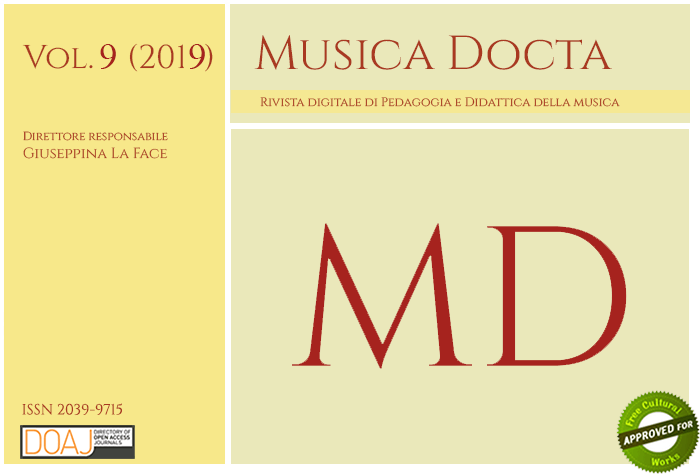La “musica degli angeli”: Josquin Desprez al liceo
DOI:
https://doi.org/10.6092/issn.2039-9715/10194Keywords:
Polyphony, Renaissance, World harmony, Angelic Choirs, LiturgyAbstract
Music and singing, which are present in every form of worship in the Christian rite, have acquired from the outset a very particular connotation, in which Jewish tradition and Neoplatonism have merged: every musical manifestation in the liturgy has as its model the perennial praise given to God from the angelic choirs. This conception, combined with the Pythagorean doctrine of the harmony of the spheres, informed throughout the Middle Ages fundamentals aspects of music theory and the aesthetic frame of reference for every sound manifestation, especially in devotional contexts (Gregorian chant, polyphony).
The Neo-Platonic Judeo-Christian approach to music, which was associated with a cosmological conception based on music regulated by arithmetical relationships, informed compositional techniques and formal organization of music from the Carolingian era onwards. It is also reflected in great works of art, in architectural solutions in the sacred buildings, and found a scenic manifestation in the first liturgical dramas. Moreover, it was the prototype of the structure of Dante’s Paradise in the Divine Commedy. This essay offers an interpretation of the motet for 24 voices Qui habitat by Josquin Desprez as grounded in these philosophical and aesthetic tenets linking composers from Middle Ages to the Renaissance and presenting still today an extraordinary model of trans-disciplinary education (music, philosophy, art history, literature), when the aim is to preserve exchange and communication among the arts.
Downloads
Published
How to Cite
Issue
Section
License
Copyright (c) 2019 Cesarino Ruini
The copyrights of all the texts on this journal belong to the respective authors without restrictions.
This journal is licensed under a Creative Commons Attribution Share-Alike 4.0 International License (full legal code).
See also our Open Access Policy.
Metadata
All the metadata of the published material is released in the public domain and may be used by anyone free of charge. This includes references.
Metadata — including references — may be re-used in any medium without prior permission for both not-for-profit and for-profit purposes. We kindly ask users to provide a link to the original metadata record.






